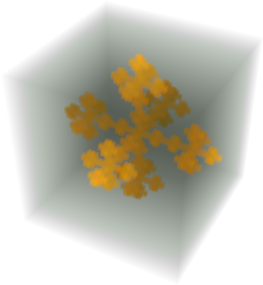Can I get a link to a notebook that explores this fractal structure?

I am specifically asking for a url to a Mathematica notebook that generates and / or visualizes this type of fractal.
If that is not available, then what would be the Mathematica command(s) to generate this visualization? It doesn't have to rotate or be animated. This is just someone's animation that they made in PHP.




p=Select[{-1,0,1}~Tuples~3,#.#<2&];Graphics3D[{Nest[#~Translate~p~Scale~(1/3)&,Cuboid[],3]}]$\endgroup$